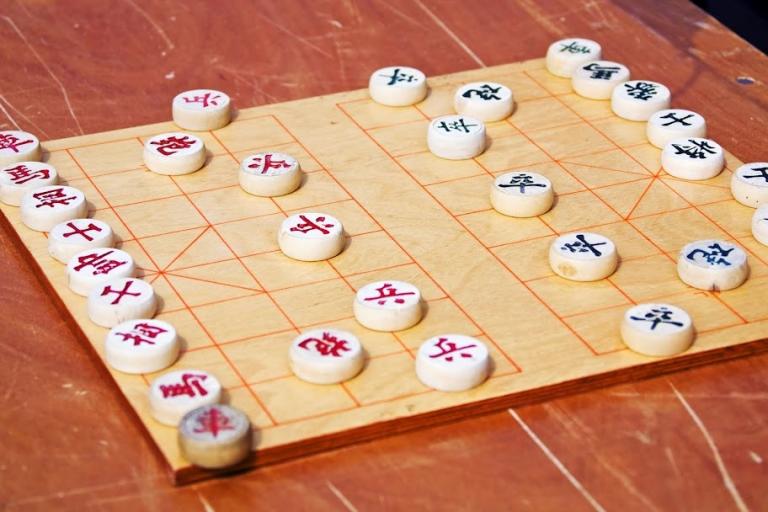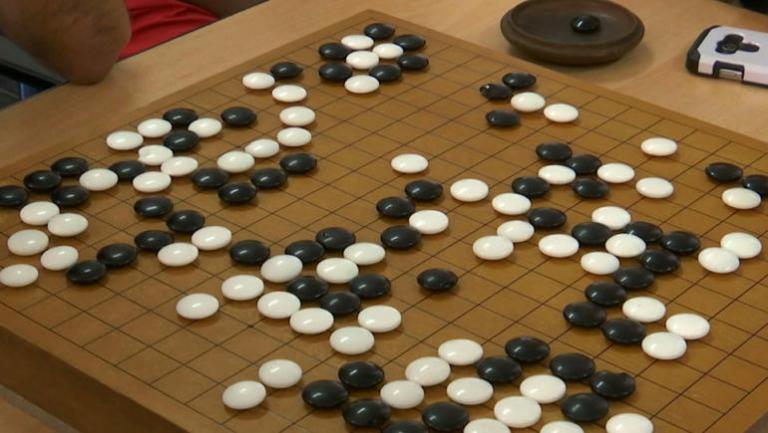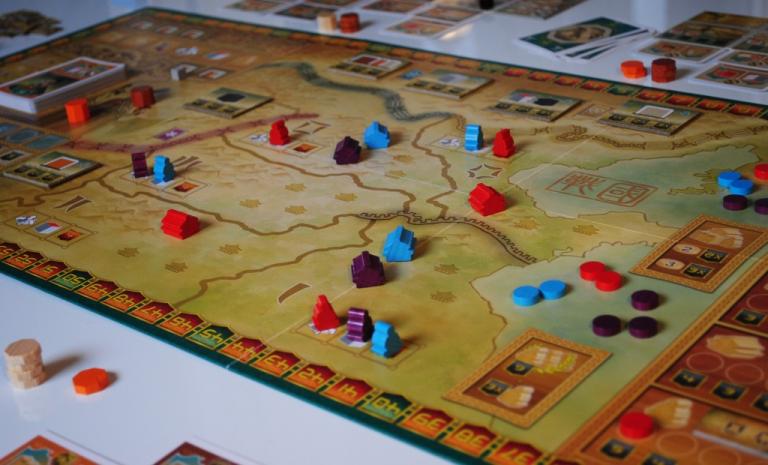Board Games
4 min readThe leisure time of a scholarly Chinese gentleman has been largely occupied by the four arts of Qin (zither), Qi(board game), Shu(calligraphy) and Hua(painting), of which Qin shows a detachment from worldly desires, Shu and Hua are combined as an art form to represent the harmony between human and nature, while only Qi is played competitively. There are mainly two kinds of Qi in ancient China-go and chess. One is more like politics, which involves gambling and the power struggle of the aristocracy, while the other is more of a military game and is popular among the masses.

The earliest records of go date back to the Spring and Autumn Period(770-476 BC). The game starts on an empty board that contains a grid of 19 horizontal andvertical lines(simplified versions of the game can be played on a 9×9,13x 13 or 17× 17 board) forming 361 intersections,a number running closely to the number of days in a year. The board is square while the stones are round, implying the ancient belief of “the square earth and the round sky.”The stones are black or white, representing yin and yang. The nine points on the board are dotted and called”star points,”corresponding tothe nine stellar palaces from where the heavens are ruled, according to Chinese mythology. The point in the center is also known as the “central star,”standing forthe origin of the universe. The division of the go board into four quarters symbolizes the four seasons and the 90 intersections in each quadrant correspond to the days in every season. The shape of the board is a mysterious star map. The player with the black stones makes the first move. Both sides put stones on the crossings and the one who occupies the larger territory at the end wins. It appears to be a quiet and genteel game, but actually is highly competitive and exciting.
As an encounter of minds, go was called duiyi(chess play) or shoutan (hand conversation). It was a hobby of emperors who were good at strategic maneuvering and scholars who had refined taste. For example, Emperor Xuanzong in the Tang Dynasty and Emperor Taizong in the Song Dynasty were both go fans. They sought good players from all over the country, retained them in the court and provided special positions for them; thus Guoshou(national players) came into being. The historianBangu from the Eastern Han Dynasty, the political figure Caocao in the Three Kingdoms Period, the litterateurs Fan Zhongyan, Ouyang Xiu, Sima Guang, Wang Anshi and Su Dongpo in the Northern Song Dynasty were all accomplished players.

Chinese chess(xiangqi) also has a long history difficult to trace. Compared to go, which was played in palaces and grand mansions, chess has always been more accessible. While the gentlemen fingered stones made of jade in their studies, peasants, craftsmen and peddlers enjoyed chess in the marketplace.
Chinese chess is played on a board of 9×10 points, and the board is divided in the middle by a “river.”
Each territory contains a king’s palace of 3× 3. There are 32 pieces in total, and the two sides are usuallydistinguished with red and black. The red moves first and the side that checkmates the opponent generalwins. Both sides have 7 classes of pieces(General, Advisor, Elephant, Horse, Chariot, Cannon, and Pawn) represented by Chinese characters.
The General moves horizontally or vertically one unit at a time and cannot move out of the palace. TheAdvisor moves diagonally one unit at a time and cannot leave the palace, either. The Elephant moves exactlytwo points diagonally, not more orless. The Horse moves horizontally or vertically in any directions by one unit, then immediately follows witha move diagonally one unit towards the direction away from its original position. The Chariot moves horizontally or vertically in any direction by any number of units; the Cannon moves horizontally or vertically in any direction by any number of units, provided that it doesn’t move through another piece. To capture a piece,a Cannon must jump over one piece that is between itself and its intended target. The Pawn moves forward one unit at a time. Having crossed over into enemy zone, it can also move left or right one unit at a time. It can never move backward.
Featured by strategy and tactics, go focuses on how to besiege the enemy. With head-to-head contests, Chinese chess emphasizes taking out the enemy pieces. While one is restrained and the other straightforward, both are highly competitive. Go is a game limited to a few peopletoday. Out of over a billion people, only several hundred players rank at the national level; they compete with Japan and South Korea every year. As a loyal companion to ordinary people, Chinese chess is played everywhere, under a tree, in a park, often with an audience standing around. They may be total strangers to each other, the players as well as the onlookers, but a game can be enough to eliminate the distance and make them friends.









